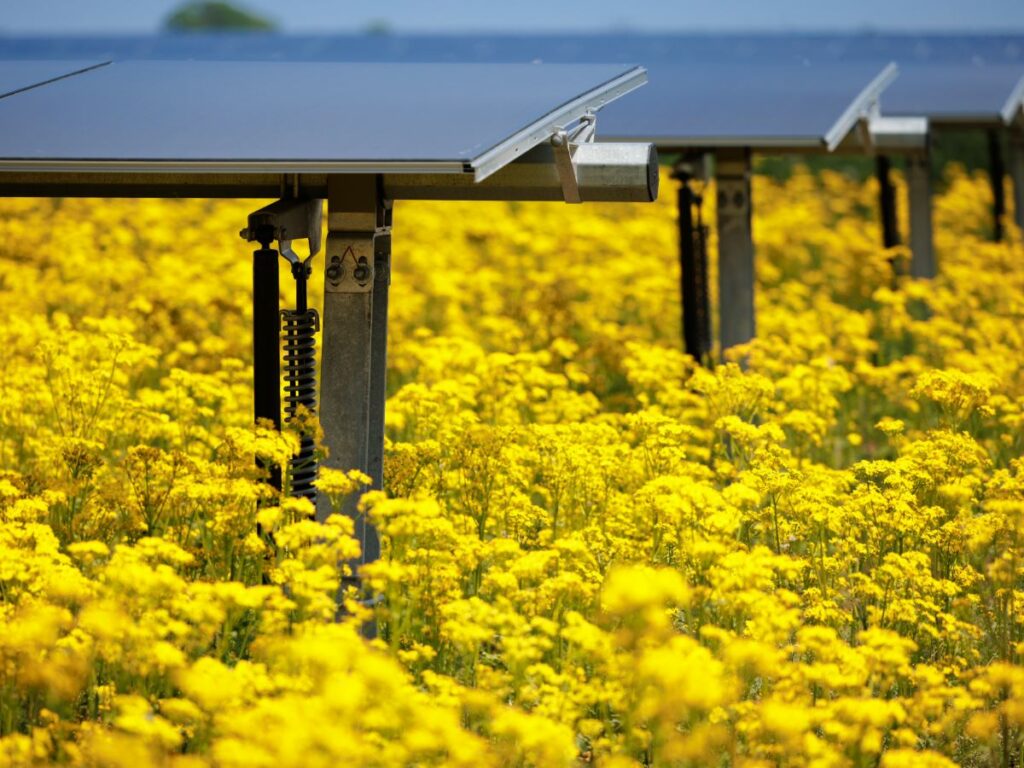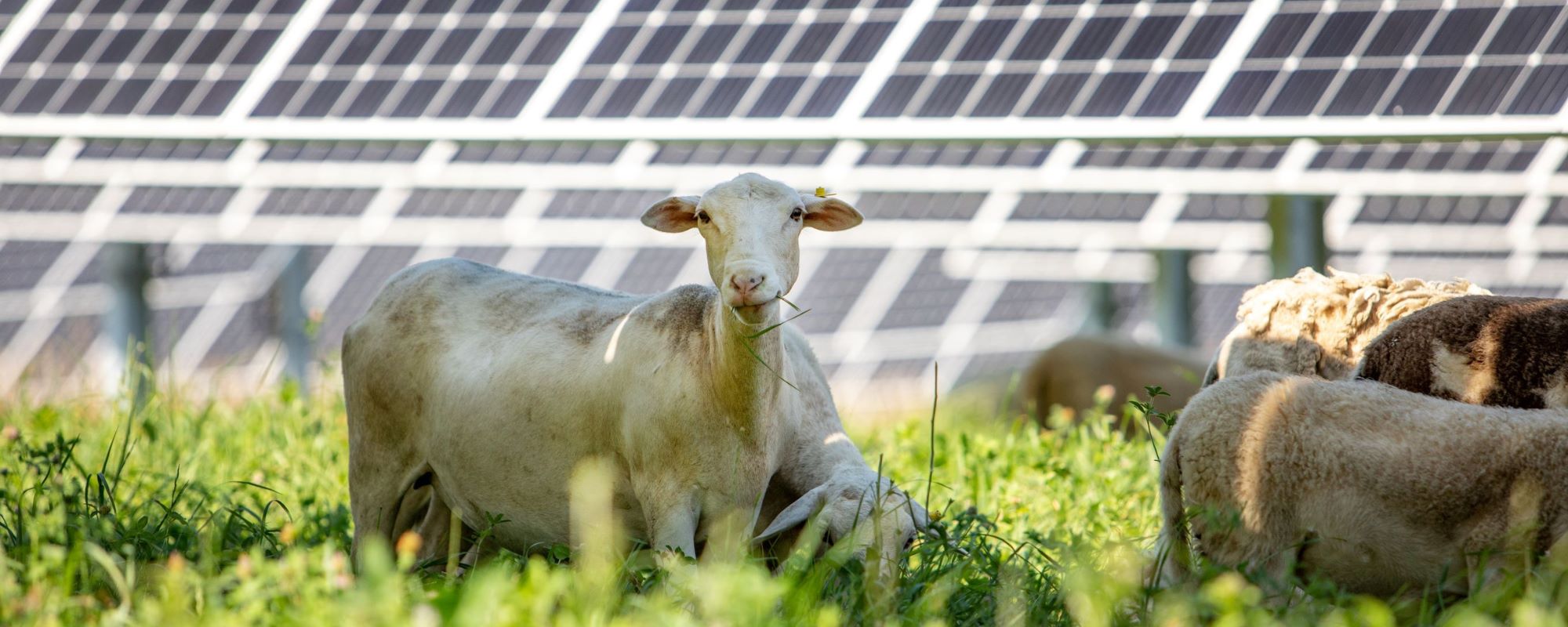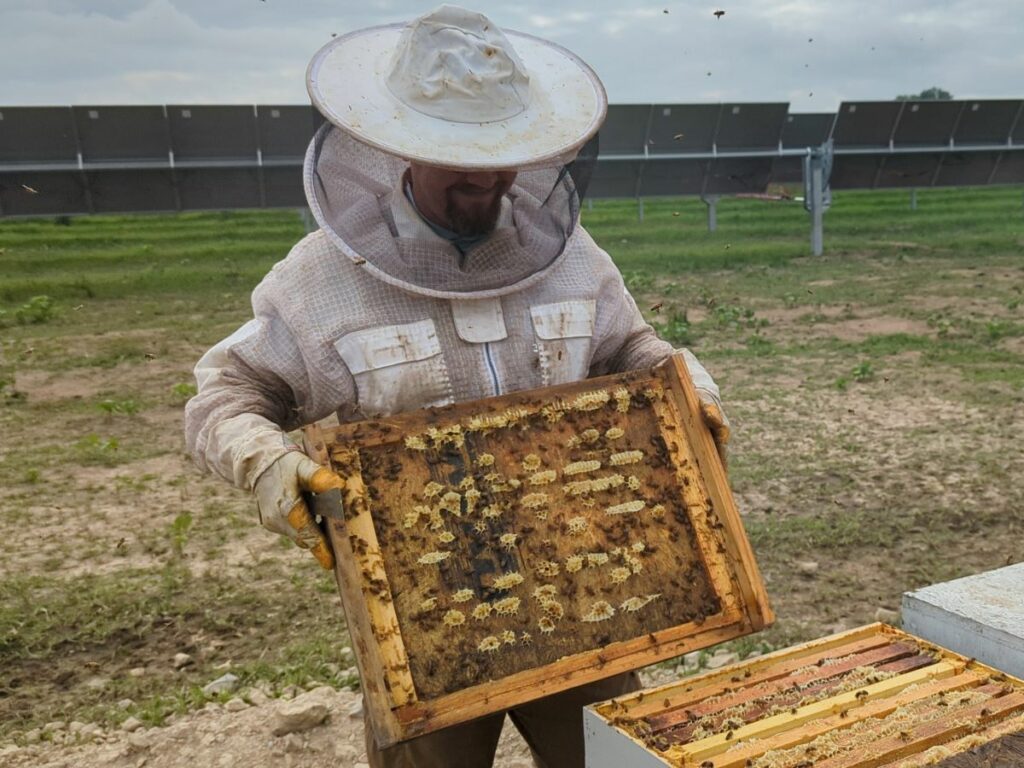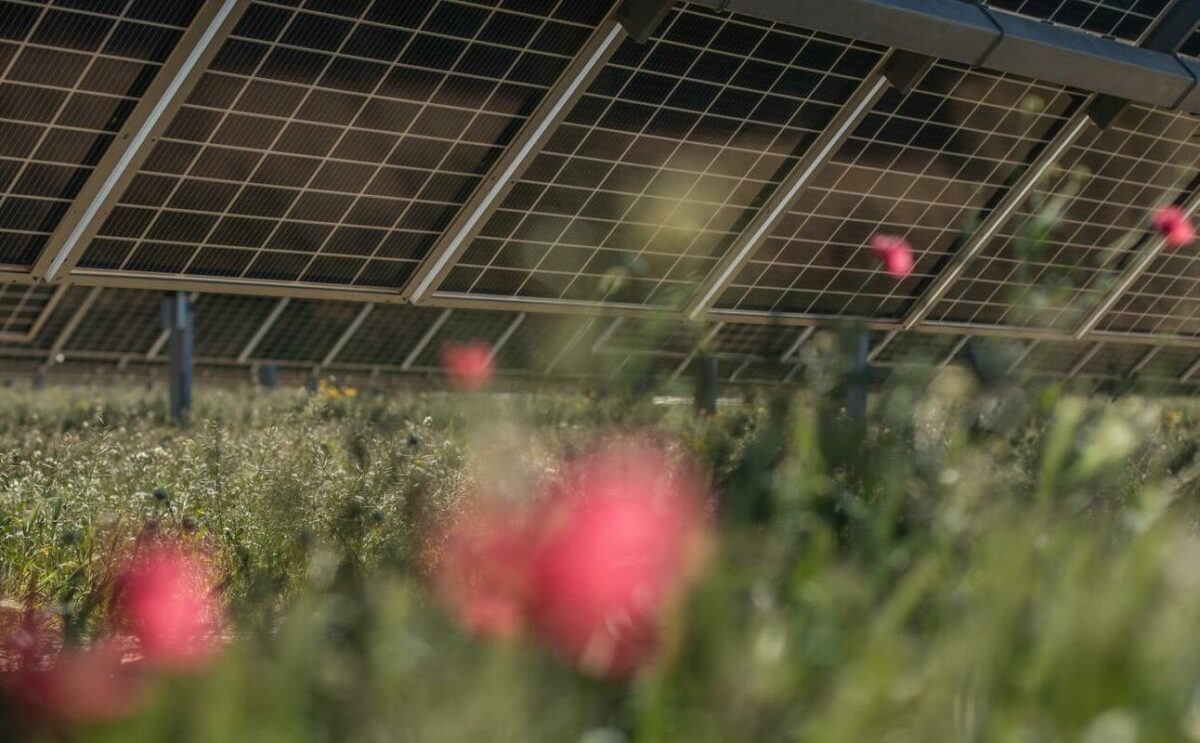Beyond clean energy: Lightsource bp’s commitment to biodiversity and farming
Biodiversity is essential for life on our planet and is facing an unprecedented crisis. Worldwide, species loss rates are rapidly increasing, with direct impacts on the health of ecosystems and the natural resources we depend on. This scenario requires urgent and concrete action to reverse this trend.
The renewable energy sector, particularly solar energy, plays a critical role in this challenge. In solar parks, infrastructures leave vast spaces available for the restoration of natural habitats and other biodiversity-friendly initiatives. This is not only an opportunity but also a responsibility: we must use the land in the best possible way, improving biodiversity and promoting sustainable land uses.
Lightsource bp’s commitment to biodiversity
Lightsource bp is committed to being a leader in promoting biodiversity. In 2023, the company officially introduced the goal of ensuring a Biodiversity Net Gain (BNG) in all new greenfield projects that it develops and financially close from that point forward. This means that each new project must lead to a measurable increase in biodiversity at the site where the facilities are installed.
The goal is to be able to measure and demonstrate a Biodiversity Net Gain (BNG) in the new solar parks that are developed within 5 years of their construction or, in more complex cases, within an ecologically appropriate period.

Multi land use in action
It is common in the UK for solar farms to be developed on previously grazed land. To date, Lightsource bp has developed over 55 sites where sheep grazing has been implemented, mostly through goodwill agreements with landowners. A goodwill or good-faith agreement is an honest and fair agreement between two parties (in this case, Lightsource bp and each farmer) to mutually benefit from a certain situation without undermining the other party’s right to the benefits of the contract. In these cases, the mutual benefit is grazing: sheep feed in a wide grassland area at no cost, while serving as a vegetation control service for the PV plant.
At Tiln Solar Farm in Nottinghamshire, UK, the majority of the site is open to grazing, and ten acres are intentionally left free of panels to cultivate wildflower meadows—supporting bees, butterflies, and other pollinators. Let’s now have a look at the six reasons why sheep grazing and solar are the perfect partnership:
- Farmers can keep their flock: Sheep are the perfect size to graze under and around solar panels without reducing stocking density. Unlike larger animals such as cows or horses, they fit well within solar farms, allowing farmers to maintain or even expand their flock.
- Natural lawn mowers: Vegetation management around solar panels is crucial. Sheep provide a natural, cost-effective solution by efficiently keeping grass and weeds in check. This reduces reliance on expensive, labour-intensive, and environmentally harmful alternatives like mowing or herbicides.
- Happier, healthier sheep: Research shows that sheep grazing in solar fields are healthier and more content. The panels offer shade and shelter, reducing stress and promoting natural behaviours like resting and grazing. Some evidence even suggests this could improve wool quality.
- Enhanced biodiversity: As sheep graze, they naturally fertilize the soil and spread seeds through their wool and droppings. This process encourages diverse plant growth, creating a richer habitat for insects, birds, and small mammals, ultimately supporting a thriving ecosystem. Research at the Wilburton Solar Farm in Cambridgeshire, UK, has shown that the brown hare population of the area rose from 3-4 before construction to over 50 frequently seen now, while the English partridge population, a red-list species, increased from 3-5 breeding pairs to over 20, benefiting from the shelter and insect-rich habitat provided at the farm.
- Improved soil health: Sheep manure enriches the soil, enhancing biodiversity and carbon storage. Rain runoff from solar panels can also increase vegetation growth, providing more food for grazing.
- Economic benefits for farmers: Sheep grazing on solar farms offers a ‘triple win’ for farmers—income from land leasing, grazing contracts, and agricultural products like wool, dairy, or meat. This diversification strengthens both solar projects and farming communities.
Sweet energy: how Lightsource bp solar farms support pollinators
Pollinators, like bees and butterflies, are essential to global food production, yet their populations are declining due to habitat loss. The company addresses this challenge by transforming solar farms into pollinator sanctuaries.
By planting wildflowers under and around solar panels, we create rich habitats that support healthy pollinator populations. Research shows that solar farms with pollinator-friendly vegetation can significantly increase native bees and butterfly numbers in just a few years.
In Italy, Lightsource bp is working to integrate biodiversity protection into ongoing projects. For example, in the Torre di Mastro project, the site design includes the planting of hedgerows, trees, and native shrub species, creating ecological corridors and habitats for local fauna. A pollinator-friendly seed mix will be sown throughout the site, helping to attract bees, butterflies, and other vital pollinating insects.
In Portugal, Lightsource bp collaborates with the environmental organisation Palombar to conserve the Albanella minore (Circus pygargus), a protected migratory bird of prey whose population has decreased by 80% in the last ten years. The initiative includes funding a species monitoring program to analyse the impact of renewable projects on their population and creating maps to identify ecologically sensitive areas to facilitate environmental integration.
In Spain, through collaboration with the Spanish National Research Council (CSIC), a study was launched to examine the movements and land use of smaller kestrels. Preliminary results suggest that this species could thrive in areas previously considered unsuitable, such as solar sites, provided that agricultural practices and land management support their diet with large insects.
By prioritising biodiversity and dual use of the land for both energy and agricultural production, Lightsource bp ensures that solar farms serve as long-term assets to both nature and the community. With a lifespan of up to 40 years, solar farms must be designed with sustainability in mind. Through ecological assessments and collaboration with the local rural community, this approach is redefining what solar farms can achieve.
Latest news
30 Jun, 2025
SolarPower Europe launches Global Market Outlook for Solar Power 2025-2029
Read our summary of SolarPower Europe’s Global Market Outlook for Solar Power 2025-2029.
29 May, 2025
Lightsource bp publishes 2024 Sustainability Report
Lightsource bp, a global trusted partner in delivering onshore renewable energy solutions, is pleased to publish its 2024 Sustainability Report.
02 Apr, 2025
Lightsource bp contributes to the World Economic Forum’s conversation on responsible renewables deployment practices
Lightsource bp’s Penny Laurenson, Global Head of Sustainability, contributed to WEF’s conversation and thought leadership on responsible deployment practices.





